The Food and Drug Administration (FDA) recommends that all your sharps, which include needles, syringes, lancets, auto-injectors, infusion sets, and connection sets, should be disposed of into approved sharps containers. These containers provide a safe and efficient way for you to dispose of any materials that could potentially cut or puncture skin and cause infection.
Per the FDA, all sharps containers must be made of a strong, hard plastic that’s also leak-resistant and has a lid that fits the size of the container. It must also be upright, stable and labeled with a biohazard or hazard warning symbol.
You can purchase multiple sharps containers through multiple different FDA-approved suppliers. The size you get depends on the size of your sharps, the volume you need to dispose of and how often your container needs to be replaced. Once full, sharps containers can be secured and placed into a larger, rigid biohazard container to be picked up by a licensed medical waste disposal vendor.
 Hinge Cap
Hinge Cap
Hinge caps are sharps containers that snap close when you dispose of any sharp. The hinge provides a locking closure when the container is full. Because you have to manually open and close the lid, it’s only recommended if you don’t frequently dispose of sharps.
This type is extremely accessible and available in many different shapes and sizes, so make sure the container you purchase fits the type of sharps that will be placed in the container.
 Horizontal Entry Sharps Containers
Horizontal Entry Sharps Containers
Horizontal entry allows you to place sharps horizontally. This lid provides you with the maximum amount of storage space and an opening big enough for larger sharps.
 Mailbox Lid
Mailbox Lid
A mailbox lid is similar to the horizontal entry. The mailbox style consists of a hinged lid that seals the horizontal opening shut when you’re not using it and locks when the container is full. This sharps container provides you another level of safety.
 Always-Open Lid
Always-Open Lid
Though the always-open style doesn’t provide you as much protection, the lid is angled to prevent contact. This lid is extremely easy to access and is a great option if you dispose of sharps frequently such as in a lab environment.
 Side-Entry
Side-Entry
The side-entry lid is a unique style. There’s a small slot on the side rather than the top for you to dispose of your sharps. It’s extremely effective in preventing contact, but this style limits the size of the sharps you can insert.
 Foot-Operated Lids
Foot-Operated Lids
Foot-operated lids are readily accessible and convenient if you dispose of sharps frequently. It’s often found on a large container in places where there is a large volume of sharps being disposed of. Again, this is best placed in an out-of-reach area where only licensed and trained professionals are working, such as in a lab setting.
Size, Shape and Color of Sharps Containers
When considering the various types of sharps containers, be sure that the size, shape and color fit your disposal needs. If you’re disposing of large amounts of sharps, foot-operated or always-open can accommodate large amounts and would be great options albeit with an increased risk of an accidental sharps stick occurring if proper care and attention are not taken.
Additionally, the size of your sharps is a major factor. Long, short, skinny, wide and misshapen sharps all require different sized openings and lids, so make sure you know the specifications you need.
Different color options are also available. Red is the most common, but green, white and other colors are offered. Containers can also vary in opacity, which can make it easier to see how full it is. Depending on your practice, you may be able to explore the idea of color-coding your sharps containers.
When looking to purchase a sharps container, it’s important you assess all options. Consult with suppliers to discuss what lid, size, shape and color is the safest option for your practice’s needs.
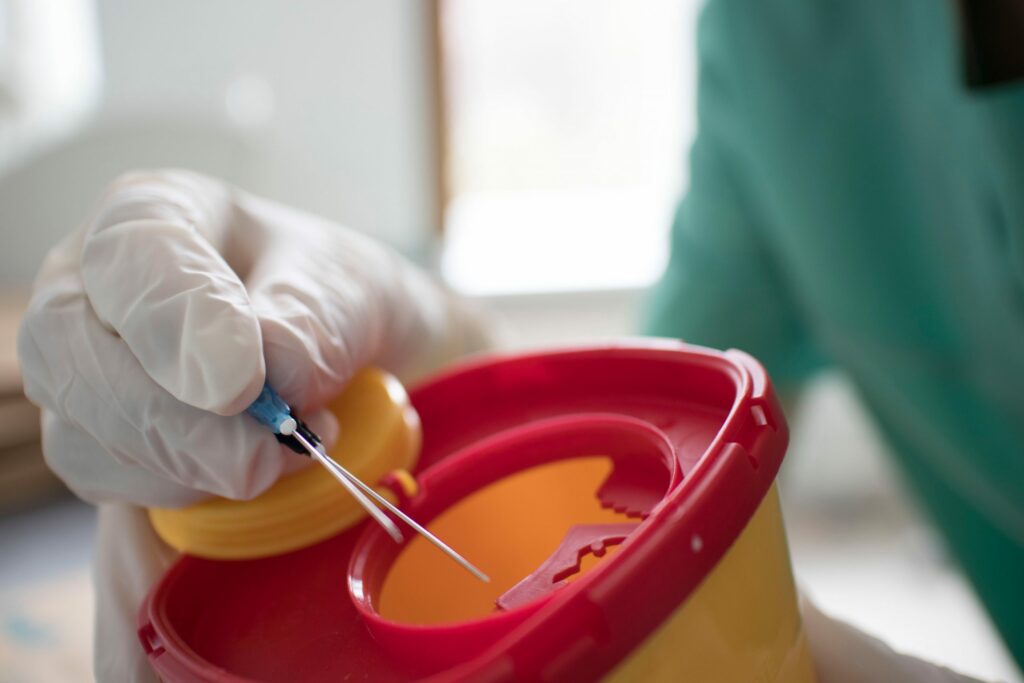
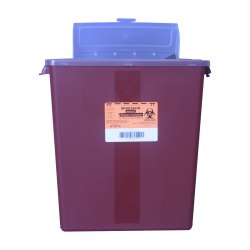 Hinge Cap
Hinge Cap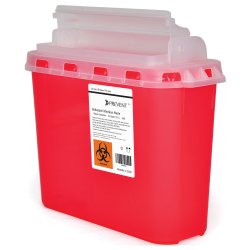 Horizontal Entry Sharps Containers
Horizontal Entry Sharps Containers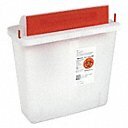 Mailbox Lid
Mailbox Lid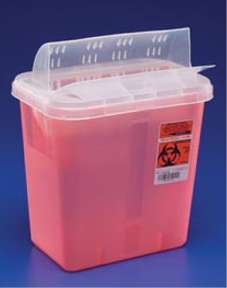 Always-Open Lid
Always-Open Lid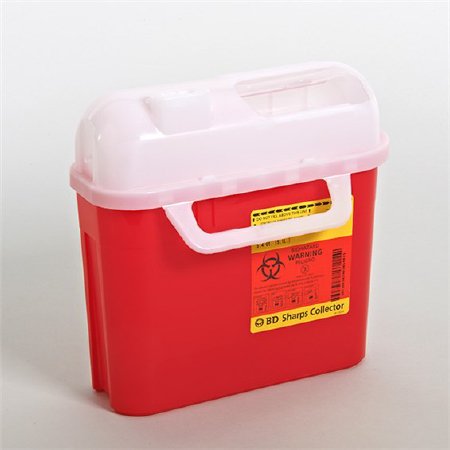 Side-Entry
Side-Entry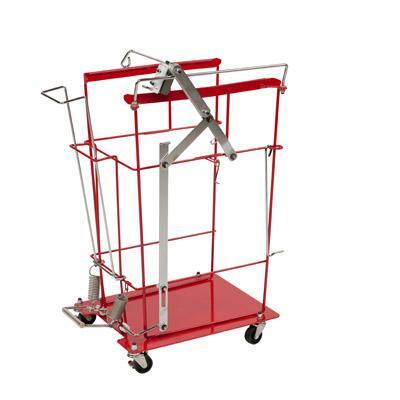 Foot-Operated Lids
Foot-Operated Lids

